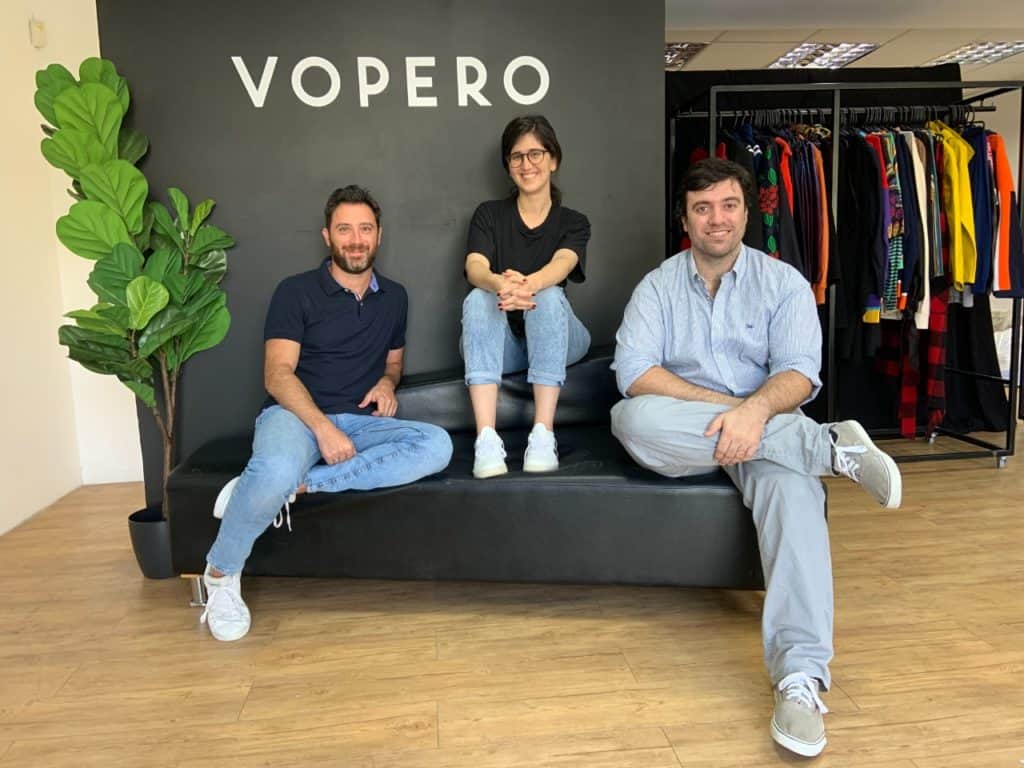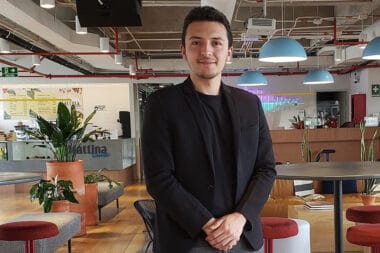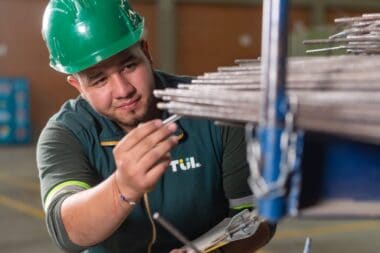The second-hand retail market is on the radar due to the convenience it offers consumers when buying used items in recent years and because the fashion industry generates a significant amount of waste.
In this way, reports predict that the global resale market, also known as recommerce, will reach approximately USD$350 billion in 2027.
However, locating second-hand items is still not the easiest, especially in Latin America.
Some startups believe this region is ripe for injecting technology into the commerce chain so that retailers can more easily accept products for sale and facilitate the transfer of items to new homes.
Devolut and Reversso are assisting on the returns side in the region, while Vopero, based in Uruguay, is working on resale.
The company’s name means ‘your virtual closet’ in Spanish and was founded in 2020 to introduce a new generation of consumers in Latin America who choose second-hand first, said Alejandro Esperanza, co-founder and CEO of Vopero, to TechCrunch.
Esperanza and co-founders Maggie Ferber and Ignacio Cattivelli are targeting the Latin American resale market worth USD$40 billion. What they do is called ‘resale as a service,’ and they have developed a comprehensive solution.
Their patented technology combines the ability to process many products with a full-service fashion resale marketplace.
Vopero does all the work for the sellers, who can use an omnichannel approach to market their available products. It also provides personalized online buying and selling experiences and demand and sales analytics.
How Does Vopero Work?
It works as follows: Sellers download the app and request a Vopero kit with a bag with a QR code to hold about 30 items.
Once filled, the seller scans the QR code to schedule a pick-up at their home.
Like ThredUP, Poshmark, and The RealReal, Vopero processes the garments and uploads images to the platform, where sellers can monitor the selling process.
Currently, items can take up to a week to be listed on the platform, although Ferber stated in an interview that the company informs sellers that it could take up to three weeks.
Items take an average of 15 days to sell on the site, according to Esperanza.
Sellers receive notifications when something sells, and they can transfer their earnings to a bank, donate them to local foundations, or make purchases on the platform.
If certain items are not selected for resale, sellers are informed of the reason, and these items are donated for a direct impact, upcycling, or recycling.
On the other hand, buyers can use Vopero online or through an iOS or Android app to find second-hand clothing and accessories from brands like Zara and Prada. Users can search by brand, size, and color.
User safety is also a priority for Vopero’s co-founders.
“Consumers are looking for a solution for their closets. In that sense, what we’ve built addresses the necessary security and protection needs for us to handle everything, especially payments.
“In this way, there is a certain trust in the brand since we position ourselves between buyers and sellers,” Maggie Ferber explained to TechCrunch.
The company operates as a consignment store and makes money when items are sold.
The average sales percentage is 60%, although it also depends on the type of item being sold, Ferber pointed out. For example, if it’s an expensive bag, Vopero’s profit will be lower.
Vopero currently operates in Uruguay and Mexico. According to Esperanza, the company has a large base of recurring customers, mainly through the app.
Last year, there were nearly 400,000 downloads. The company processed over a million unique items last year, with annual sales exceeding USD$5 million.
This growth has caught the attention of new venture capital funds, and the company recently closed a USD$4 million funding round.
Cencosud Ventures led the round, and existing investor Grupo Axo joined. To date, Vopero has raised USD$10 million in venture capital funding.
Vopero Sets Goals for Capital
Growth: Vopero aims to launch in Chile by the end of the year. The goal is to place 1,000 of its items in ‘corners’ of physical stores and hopes to have 40 of these in París stores (owned by Cencosud) in the next 18 months.
Each corner will have a QR code where buyers can connect to the internet and see thousands of additional clothing options.
Franchises: The company wants to continue this trend by accelerating its franchise program in physical department stores, including at least 20 in Mexico, by the end of the year.
Vopero already has some resale items in two stores in Mexico and one in Uruguay. All the stores already have a positive EBITDA, Ferber said.
Awareness: Vopero plans to increase the adoption of resale practices among major fashion brands. They also work with over 450 influencers who showcase their closets on the app.
“We want to be perceived as an option that aligns with accessible fashion but with a sustainable focus. We aim to win not only our generation inclined to buy from these platforms but also to make them understand the impact of fashion and how they can change the world through fashion,” Esperanza concluded.






